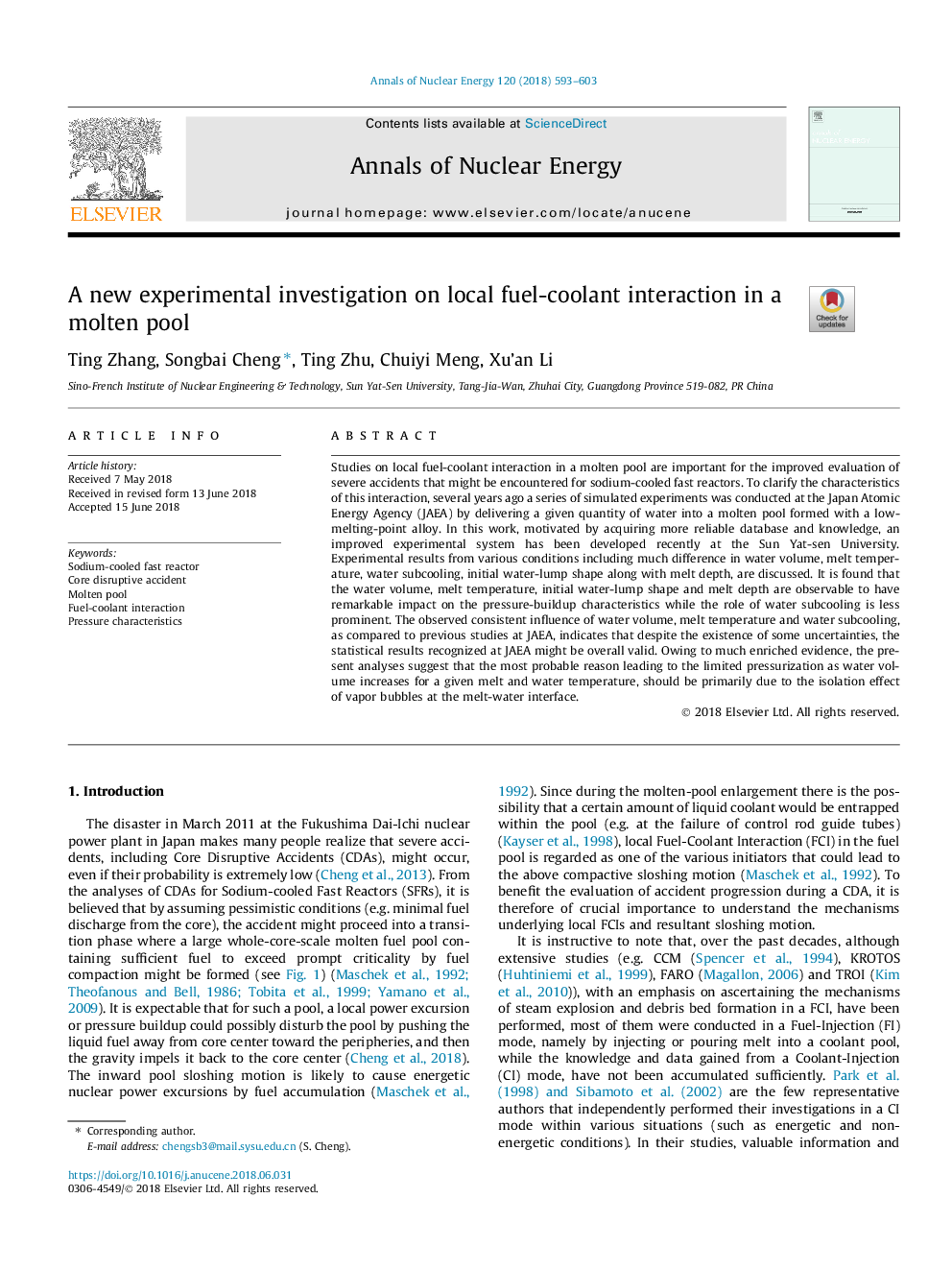| Article ID | Journal | Published Year | Pages | File Type |
|---|---|---|---|---|
| 8066870 | Annals of Nuclear Energy | 2018 | 11 Pages |
Abstract
Studies on local fuel-coolant interaction in a molten pool are important for the improved evaluation of severe accidents that might be encountered for sodium-cooled fast reactors. To clarify the characteristics of this interaction, several years ago a series of simulated experiments was conducted at the Japan Atomic Energy Agency (JAEA) by delivering a given quantity of water into a molten pool formed with a low-melting-point alloy. In this work, motivated by acquiring more reliable database and knowledge, an improved experimental system has been developed recently at the Sun Yat-sen University. Experimental results from various conditions including much difference in water volume, melt temperature, water subcooling, initial water-lump shape along with melt depth, are discussed. It is found that the water volume, melt temperature, initial water-lump shape and melt depth are observable to have remarkable impact on the pressure-buildup characteristics while the role of water subcooling is less prominent. The observed consistent influence of water volume, melt temperature and water subcooling, as compared to previous studies at JAEA, indicates that despite the existence of some uncertainties, the statistical results recognized at JAEA might be overall valid. Owing to much enriched evidence, the present analyses suggest that the most probable reason leading to the limited pressurization as water volume increases for a given melt and water temperature, should be primarily due to the isolation effect of vapor bubbles at the melt-water interface.
Keywords
Related Topics
Physical Sciences and Engineering
Energy
Energy Engineering and Power Technology
Authors
Ting Zhang, Songbai Cheng, Ting Zhu, Chuiyi Meng, Xu'an Li,
